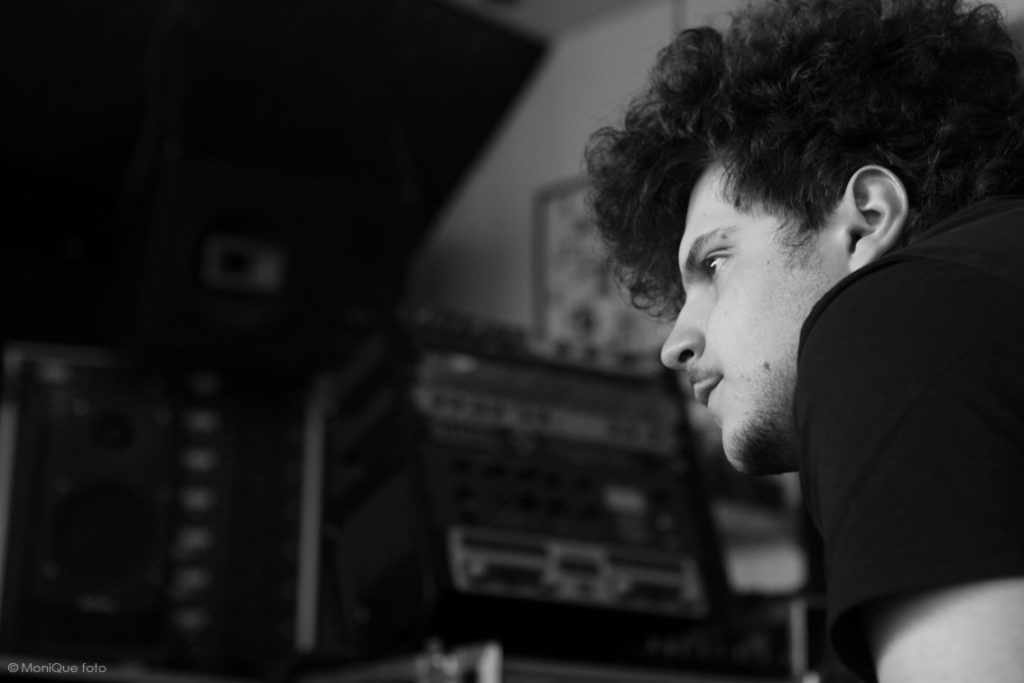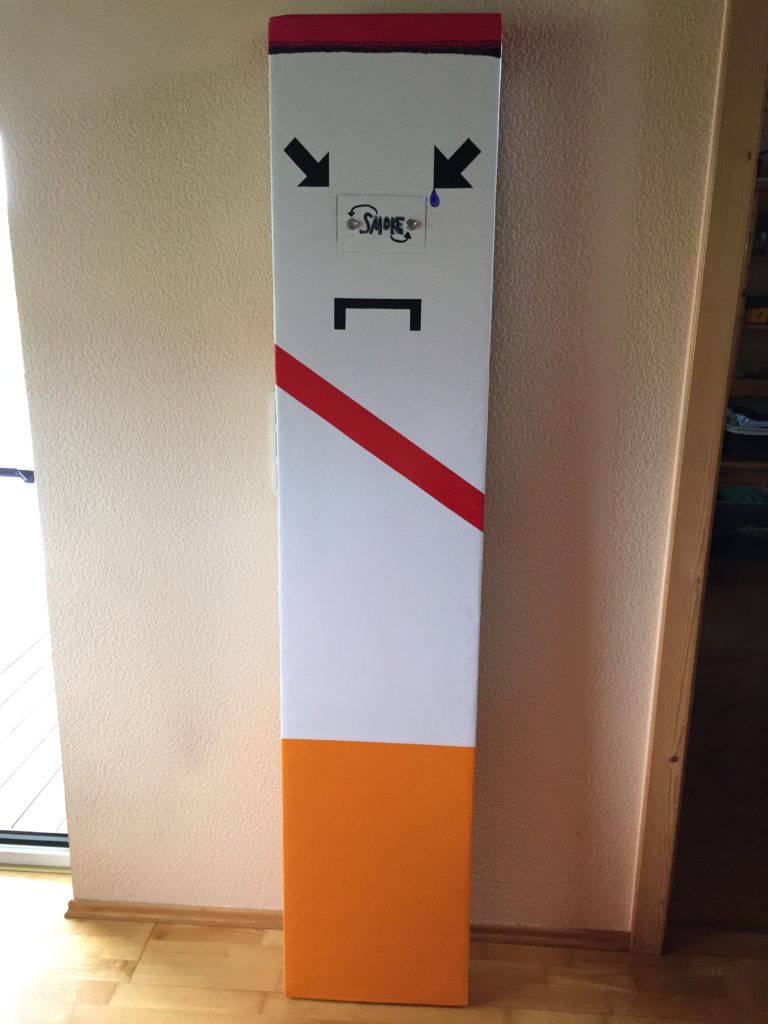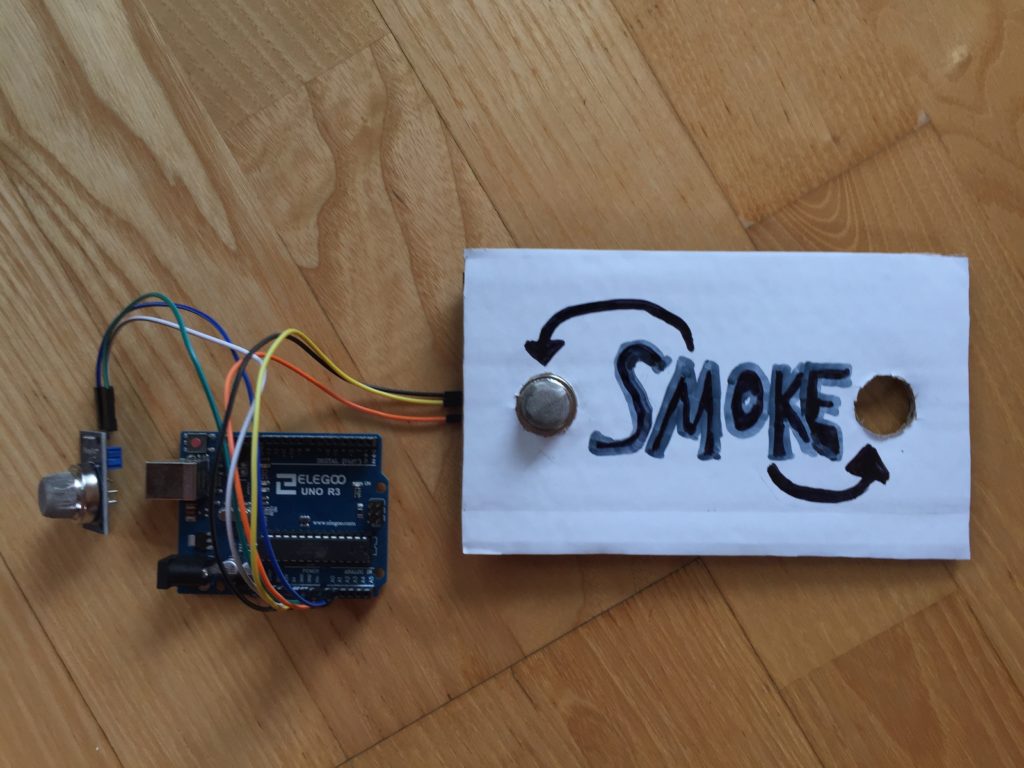Music & Sound Designer/Shaper/Engineer.

Starting off by learning to play instruments in a classical sense (such as jazz trumpet & keys), the world of electronic music production quickly pulled me into its orbit and by the age of about 15, my first DAW helped me put a lot of (more or less) musical data onto my parents computer. From that moment on, homework and studying became non-priorities, as I was constantly chasing new ideas and techniques.
Years passed by, projects got finished, collaborations were started, awards won, internships passed, and eventually, I was able to combine my passion with studying and graduated as a Bachelor of Science in Engineering (even passing with honors, who would have thought?!).
Over the years I have developed new skills such as mixing and recording and improved my production and sound design assets. However, the journey has only just begun as I am working on many interesting projects as I am writing these lines.
One of them being my solo musical output with which I was able to release my first EP (mastered by my friend and mentor Patrick Pulsinger) on the renowned Berlin label Dirt Crew Recordings. A release which also lead to an interview and mix on radio FM4 and great feedback by legends such as Laurent Garnier or Mijk van Dijk. Also, my music is now being played in clubs and on radio stations all over the world!
Another project I am consistently working on is the collaborative work with my friend and bachelor-buddy Maximilian Einfalt called „dipolar sound“ with which we focus on sound design, music composition & production and mixing. We are only starting out but were already able to work on some great projects, a selection of those projects shall be listed below:
- Der Onkel [The Hawk] – a movie by Michael Ostrowski & Helmut Köpping, starring Anke Engelke, Michael Ostrowski, Hilde Dalik, Simon Schwarz, Gerhard Polt and more – Music Composition, Production & Recording by dipolar sound alongside Zebo Adam (who did major parts of the soundtrack).
- LE GRAND BLEU – an art project by designer FJBaur, video whizz kid (and another bachelor-buddy) zehnzwanzig and photographer Hilde van Mas, starring Conchita Wurst – Music Composition & Production, Sound Design, Mixing & Mastering by dipolar sound.
- Mugshot – a fashion video introducing a new collection by eyewear designer Robert La Roche, shot, edited and graded once again by zehnzwanzig, including photography (once again) by Hilde van Mas – Music Composition & Production, Mixing & Mastering by dipolar sound.
- Time – a short film directed by Hanna Mathis – Sound Design & Mixing by dipolar sound.
.. and now, let’s continue by showcasing my master’s projects!
Semester 1 – „Schall gegen Rauch“
“Schall gegen Rauch” is a reactive outdoors sound installation, based on 14 loudspeakers that are placed in one of the smoking areas at our University.
The goal is to stop smokers from smoking, even in dedicated smoking areas. (`Cause it’s unhealthy!)
To help them stop I created a (hopefully) even more uncomfortable version of Chopin’s “Funeral March” which is played on said 14 loudspeakers. I also implemented a “beeping sound” every time a smoker dies (statistically) and designed a bell sound that functions as a signal tone and reminder of certain death.
For the reactive character of the installation, I used smoke sensors, going into an Arduino, eventually controlling Ableton.


Semester 2 – „Spinning Gates“
The goal of „Spinning Gates“ was to build a Step Sequencer based on a turntable.
The sequencer contains 6 contact microphones in 3 radii, every time a „sequence stone“ that is mounted on a slipmat via velcro passes by, the signal is passed to the separate solo outputs (mini-jack and jack) of that mic and a sum output of each radius. Before that, it can be switched on or off via flip switches that also communicate their state via LED.
The signal can then either be used to trigger analog synths but I also patched Max4Live devices that let the „stones“ trigger MIDI. (and eventually, for example, Ableton Drumracks.)
The biggest fun and USP of this sequencer is that it’s not based on a mathematical grid and that there is no quantization involved, a feature that is rarely seen, be it in todays DAWs, but also in older chaser light sequencers.
Collaborative Project – „Fallling“
The goal of the seminar „Tun, Forschen, Gründen“ was to collaborate with students from other masterclasses. I did so by doing the sound design and music (composition, production, mixing, mastering) for the animation project „Fallling“ by Sebastian Blass and Thomas Sailer.
The main character of this animation is falling through different worlds. Each of those worlds represents one of the four basic elements: fire, water, earth and air. The animation was implemented via the 3D-software Maya and the render engine Vray, Sebastian and Thomas also used the Plug-In PhoenixFD for additional visual effects.
The sound design and music was implemented via the DAW Logic Pro X and additional Software by kilohearts, I also used foley sounds.
The auditory components can be described in three layers:
- diegetic (but hyperrealistic) scoring of the representations of the aforementioned elements,
- music &
- sound effects (SFX).
In the last-named sound effects layer, a synthesized, reversed Shepard-Risset glissando, an auditory illusion that seems to continually descend in pitch but never „arrives“, was used to complement the falling main character.
Semester 3 – „Expansion“
In the third semester of our studies, the main topic was spatial audio/3D audio/360° audio. That’s why I created a 4-piece EP in the ambisonics format, called „Expansion“.
In a total length of about 20 minutes, a sonic travel through different eras of electronic music, such as musique concrète, ambient, cosmic music, electro punk, electronic body music, electro, techno, jungle or IDM can be experienced.
Not only is this EP about the „lifespan“ of electronic music (up to a certain point), it also sets the average expectancy of a human being as its framework and is based around different periods, not only genre-wise, but also human-life-wise.
The 4 tracks are:
- Fundament & Init (prenatal phase & birth)
- Quantize & Revolt (childhood, adolescence, early adulthood)
- Sustain & Crisis (adulthood)
- Decay & Release (seniority & death)
The goal was to capture certain aspects of those periods in terms of external influences, perception and emotions, using production techniques and aesthetics of the corresponding musical eras in a spatial audio context. Human-based data, such as pulse rate, serves as the basis for the EPs beats per minute.
Semester 4 – Spatial Audio Guideline
In the fourth semester of our studies, our masterclass developed a guideline for the workflow of several spatial audio formats and plug-ins including Dolby Atmos, MPEG-H, dearVR, FLUX, SPARTA and the plug-in suite by IEM. It can be downloaded below.
Scientific Work – Master’s Thesis
My master’s thesis focussed on the impact of different GUIs (Graphical User Interfaces) of digital distortion effects on the user’s auditory, timbral perceptions. My two supervisors were Dipl.-Ing. Thomas Wagensommerer, MA BA BSc and Dipl.-Ing. Patrik Lechner, BSc. Thank you once again!!
Abstract:
Crossmodal correspondences are a field of studies that is focusing on the connections between different modalities. It has been proven that there are connections between the visual and the auditive perception. In this work, the goal was to investigate the influence of two different graphical user interfaces (GUIs) on the auditive perception of the two timbral attributes “warmth” and “brightness”. For this, two different GUI prototypes have been designed following the design styles flat design and skeuomorphistic design. Furthermore, an online test has been carried out. The goal of this test was to let subjects of different experience levels judge the perceived timbral attributes “warmth” and “brightness” of the underlying distortion effect using different stimuli. It was disclosed that the underlying effect always was the same. The results showed that the different GUIs did not have any significant effect on the perceived “warmth” or “brightness”.
Contact
Thanks for taking the time to check out my page! For questions or inquiries feel free to contact me: